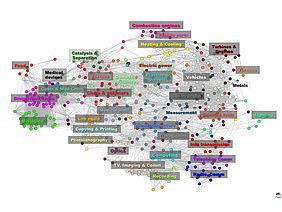This is clearly the one billion dollar question entrepreneurs and investors would like to have answered. And although we know fairly well what the potential evolution of technology performance is going to be in the coming 5 years, and we can have pretty good confidence over a 10 year horizon, we know very little about how any given technology is going to be used, if ever, in the marketplace.
Some hints, or at least food for thoughts, may come from looking at where companies worldwide are investing. This is the starting point for the study carried out at Georgia Tech in conjunction with two other universities and a data mining company.
One way to assess the investment areas is to look at the patents published. Indeed, this is what many researchers are doing but it turns out to be quite difficult to extract sensible meanings out of that analyses since the patents vary quite a lot in different areas.
In the Georgia Tech study they are considering other parameters, such as the way patents are referring to one another. Additionally, the consider publications and analyse the whole in terms of aggregated maps, each one related to a company, a domain, a geographical area, a Country... They also consider the kind of business that a particular company is in to intercept plans to differentiate or rather focus.
One can also appreciate in the broader picture how knowledge and interest evolve. As an example nano tech few years ago was mostly focusing on material science whilst now many patents are in application areas, like bio, a clear indication that nan tech is maturing and getting closer to market.
You cannot predict, still, the new killer application or product but you can get a sense of the areas where evolution is strengthening. If you have a market horizon, as the EIT ICT LABS have, you need to focus on areas where investment is reaching a critical mass, as it may be the case in proactive health care and smart cities. If on the other hand you have a longer term horizon, like in the continuation of the Framework Programs in the Horizon 2020, then you need to invest in areas where basic underpinning work is needed.
At the Future Direction Committee of the IEEE we are trying to set up a mechanisms to data mine the wealth of publications, several hundred thousands, that are being submitted for consideration to the IEEE Journals and Magazines and to leverage on crow-sourcing by polling experts coming to our thousands of conferences.







